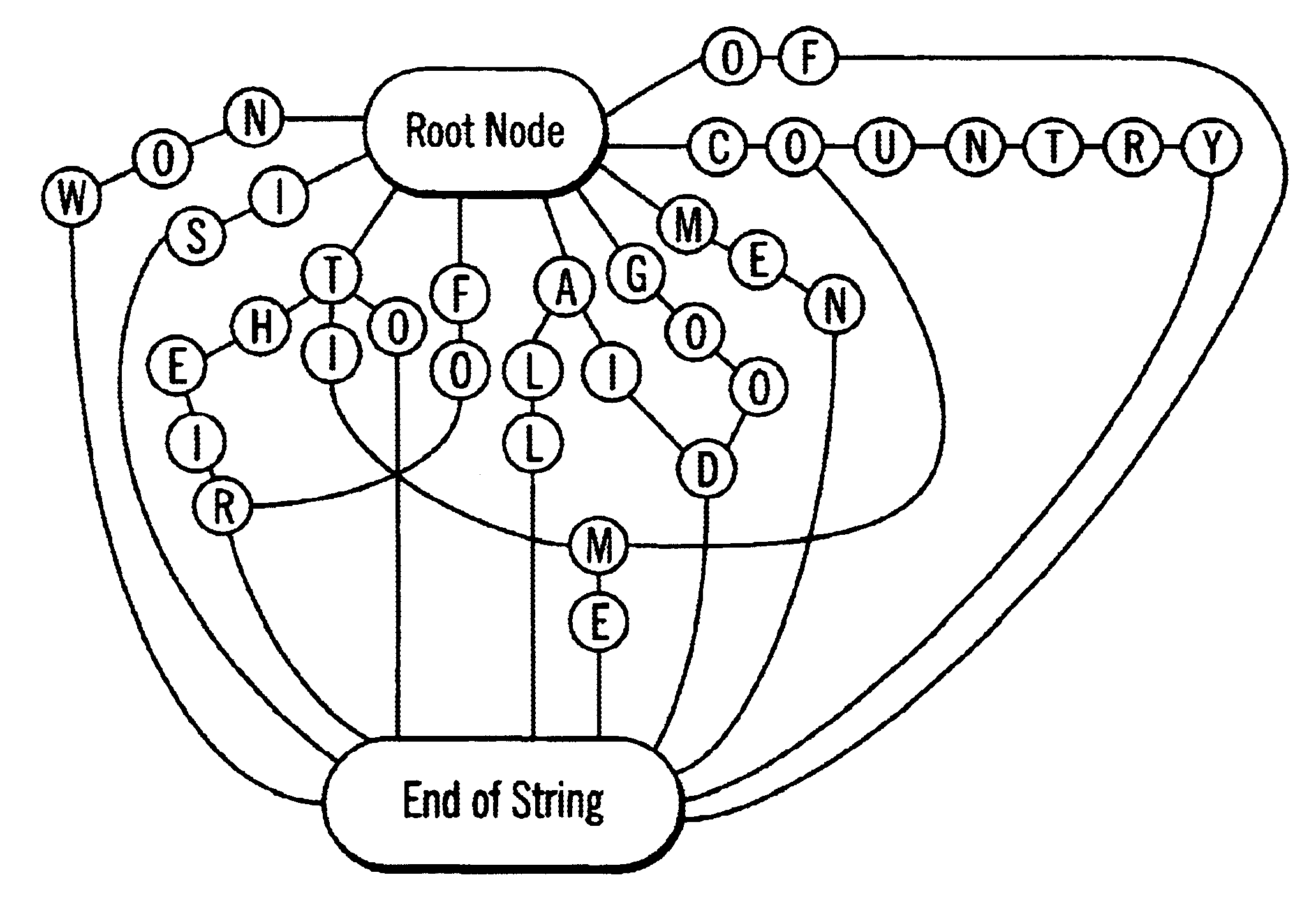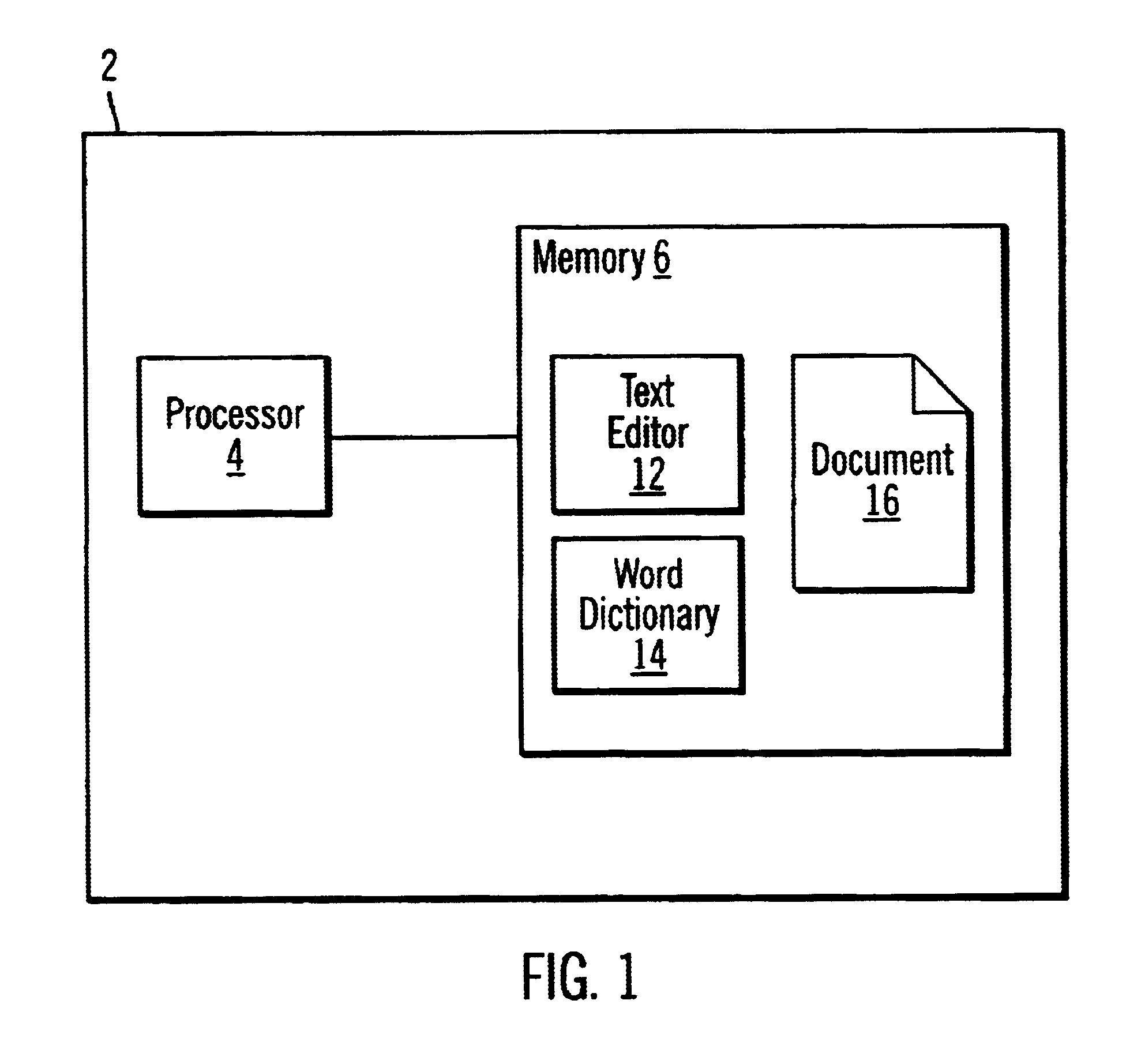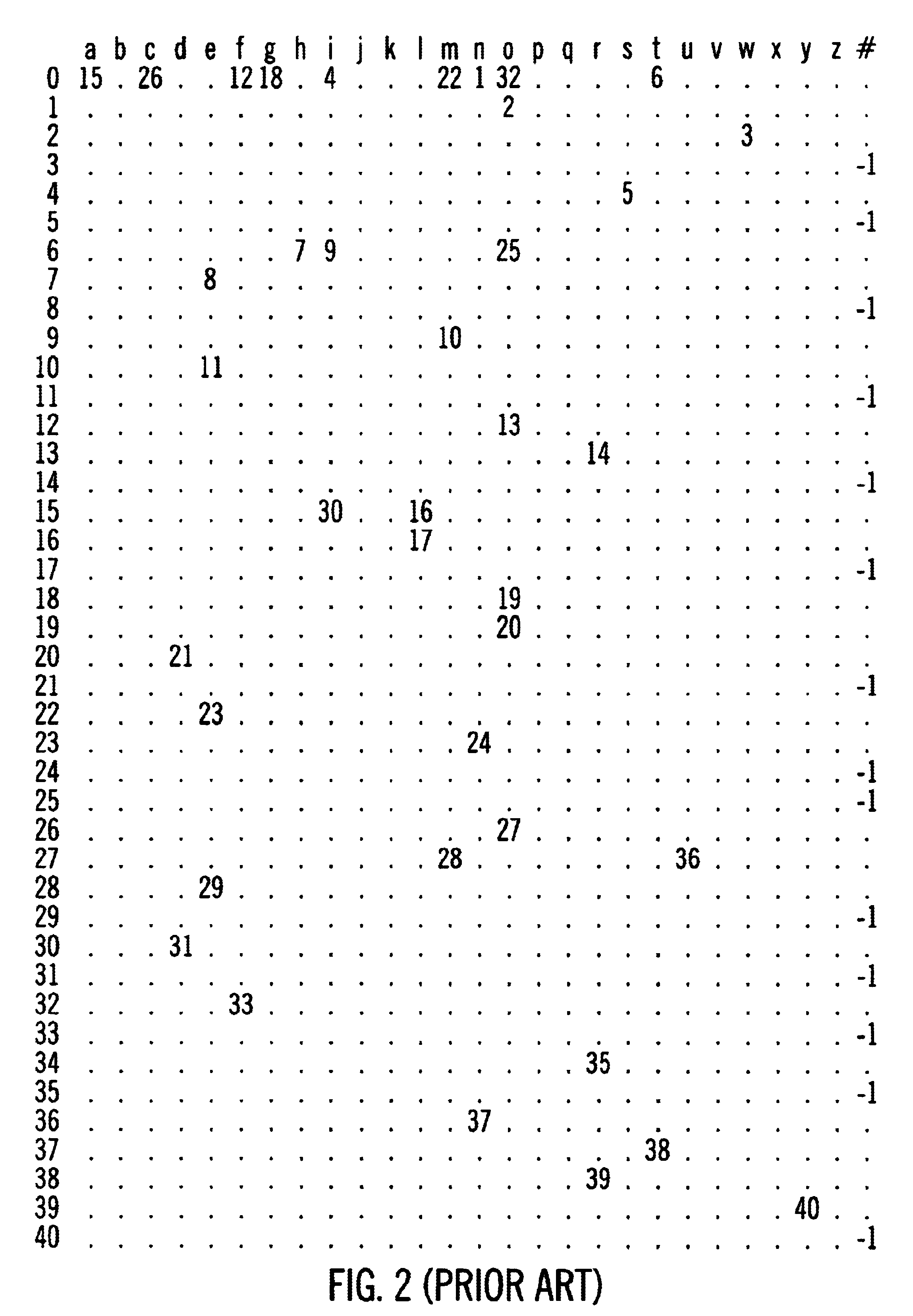The processor 4 then proceeds at block (at block 108) to delete any duplicate rows, i.e., a row that has the exact same
cell values as another row, to compress the array. The processor 4 determines (at block 106) whether any two rows have the same value in every corresponding
cell, where corresponding cells in two rows are the cells in the same column. If so, the processor 4 deletes (at block 108) one of the duplicate rows, thereby further reducing the number of bytes needed to represent the
dense array, and then renumbers (at block 110) the rows to have consecutive
numbering. Control then proceeds back to block 106 to determine whether there are any further duplicate rows. From the no
branch of block 106 or block 110, the processor 4 generates (at block 112) a two column index that has a row for each row in the array and the first column includes a pointer to one physical row in the array. Thus, the rows in the index comprise the logical rows of the array that point to physical rows in the array that include the row for that logical row. The second column includes a shift value for the row in the array corresponding to the index row number. In preferred embodiments, one or more logical rows in the index can map to a single physical row in the array. A pointer is set (at block 114) in a second column of each row of the index to point to the corresponding row in the array. Thus, the pointer in index row i points to one row in the array. Multiple logical rows could point to one physical row initially if the rows were duplicates. The shift value in the second column indicates whether the cells in the row pointed to by the pointer in the first column need to be shifted to the right or left to determine the values for the row indicated in the first column (the purpose of the shift value is described below). Initially, the second column is populated with all zeros.
Those skilled in the art may appreciate that there are many different ways to implement the above algorithms and determine rows that are eligible for merging or different ways to shift rows to make them capable of being merged. For instance, perhaps only a subset of the steps in FIGS. 3a, b may be performed, e.g., only duplicate rows are removed, only merge operations are performed, etc. Moreover, further methods may be provided to merge the non-empty values from one row into one or more rows, as long as the bit map and index provide information to allow the processor to locate the descendant cells for a particular logical row. With the above preferred data structures, more than one logical row, or nodes of the tree, are stored in a
dense array having fewer rows than the number of logical rows, thereby reducing the space needed to form the
dense array. When a row in the array is deleted or moved into another row, then the corresponding row in the index becomes a logical row that points to a physical row in the array including the descendant nodes of the logical row. The bit map allows the processor 4 to ascertain which cells in the row specified in the first index column include the non-empty values, i.e., descendants, for the particular logical row.
By eliminating many rows, the resulting dense array has substantially fewer cells than the original
sparse array. This substantially reduces the bytes and storage space needed to represent all the words. Further, this dense
array performance degrades in the same way as the original
sparse array. This dense array search time differs from the
sparse array by a constant value to access the index and bit map table. The dense array is faster to search than a tree to locate the string. As the size of the data structures increase, the search performance of the dense array improves significantly over the search performance of the
tree data structure.
FIG. 4 illustrates a dense array compressed according to the logic in FIGS. 3a, b in general tree form. The topology of FIG. 4 is produced by removing duplicate rows; merging rows does not alter the topology of FIG. 4 further. As can be seen, all strings share the greatest possible substring at the end of the string. For instance, all strings at least share the common end of string character; "time" and "come" both share the same nodes for their last common substring of "me;" "good" and "aid" both share the node for their common substring of the "d" character. This maximizing of node sharing to form the strings reduces the number of nodes or rows in the array needed to express the
data structure.
Preferred embodiments provide a compression
algorithm to produce a dense
array data structure that optimizes both storage and speed. With larger dictionaries, speed is optimized because processors can locate string characters in an array significantly faster than such strings can be located in a tree. Storage is also optimized as the number of unused cells is minimized, thereby minimizing the space the array uses. For instance, test results have indicated that dense arrays storing a substantial number of words can utilize 50% less storage space than standard binary
trie data structures and at the same time process strings 35% faster.
 Login to View More
Login to View More  Login to View More
Login to View More 


